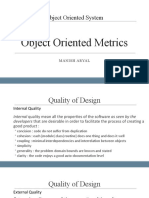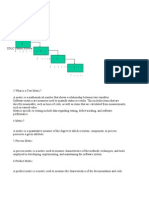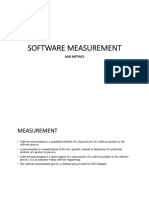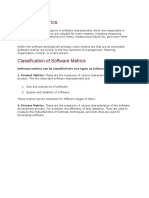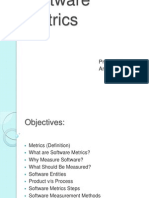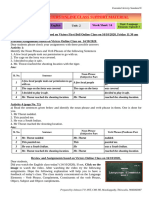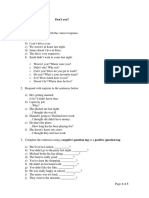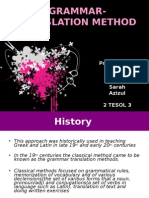0% found this document useful (0 votes)
30 views8 pagesSoftware Unit 2
Software metrics are quantifiable measures used to assess software characteristics, aiding in performance evaluation, productivity measurement, and project management. They are classified into product, process, and project metrics, with specific types such as size-oriented and function-oriented metrics focusing on different aspects of software development. Key quality metrics include code quality, reliability, performance, usability, correctness, maintainability, integrity, and security, all essential for ensuring software quality and reliability throughout its lifecycle.
Uploaded by
vijayp90981Copyright
© © All Rights Reserved
We take content rights seriously. If you suspect this is your content, claim it here.
Available Formats
Download as PDF, TXT or read online on Scribd
0% found this document useful (0 votes)
30 views8 pagesSoftware Unit 2
Software metrics are quantifiable measures used to assess software characteristics, aiding in performance evaluation, productivity measurement, and project management. They are classified into product, process, and project metrics, with specific types such as size-oriented and function-oriented metrics focusing on different aspects of software development. Key quality metrics include code quality, reliability, performance, usability, correctness, maintainability, integrity, and security, all essential for ensuring software quality and reliability throughout its lifecycle.
Uploaded by
vijayp90981Copyright
© © All Rights Reserved
We take content rights seriously. If you suspect this is your content, claim it here.
Available Formats
Download as PDF, TXT or read online on Scribd
/ 8


















